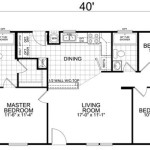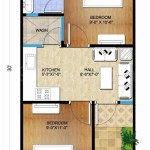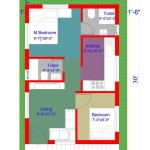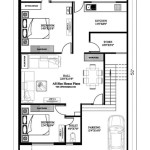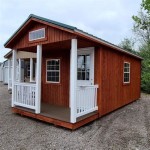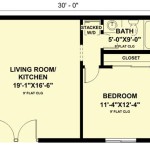Narrow Lot Rear Garage House Plans: Optimizing Space and Functionality
The increasing urbanization and densification of residential areas have led to a growing demand for innovative housing solutions that maximize limited land resources. Narrow lot rear garage house plans represent one such solution, designed to provide comfortable and functional living spaces on smaller, often irregularly shaped, plots. These plans strategically position the garage at the rear of the property, allowing for a more prominent and aesthetically pleasing street-facing facade and optimizing the use of the lot's width for living areas.
Narrow lot house plans, in general, are characterized by their efficient use of space and often incorporate vertical building strategies to compensate for the limited horizontal footprint. By placing the garage in the rear, the front of the house can feature a more traditional or modern design, enhancing curb appeal and integrating seamlessly into the existing neighborhood aesthetic. This design approach can also create a more private backyard space, shielded from street noise and traffic.
The design and implementation of narrow lot rear garage house plans require careful consideration of various factors, including local zoning regulations, building codes, site conditions, and homeowner preferences. Architects and designers must balance the need for functional living spaces, adequate parking, and visual appeal while adhering to the constraints imposed by the narrow lot dimensions. Successfully executed narrow lot rear garage house plans can significantly enhance property value and contribute to the revitalization of urban neighborhoods.
Maximizing Living Space on a Narrow Footprint
The primary challenge in designing narrow lot houses is maximizing the usable living space while maintaining comfortable proportions and functionality. Floor plans often prioritize open-concept layouts, which create a sense of spaciousness and allow for flexible use of the available area. Combining the living room, dining area, and kitchen into a single, interconnected space eliminates the need for dividing walls, thereby optimizing the flow of natural light and creating a more sociable atmosphere.
Vertical expansion is another common strategy employed in narrow lot house designs. Building upwards, rather than outwards, allows for the creation of additional bedrooms, bathrooms, or recreational areas without encroaching on the limited yard space. Multi-story designs also offer opportunities to incorporate features such as balconies, roof terraces, or rooftop gardens, which can enhance the outdoor living experience and provide panoramic views.
Strategic placement of windows and skylights is crucial for maximizing natural light penetration in narrow lot houses. Tall, narrow windows can be incorporated into the side walls of the house to capture sunlight without compromising privacy. Skylights can be installed in the roof to provide overhead illumination, particularly in areas that may not receive direct sunlight due to adjacent buildings or landscaping. Proper light management can significantly enhance the perceived spaciousness and ambiance of the interior spaces.
Storage solutions are also a critical consideration in narrow lot house designs. Built-in cabinets, shelves, and drawers can be integrated into the walls and under staircases to maximize storage capacity without taking up valuable floor space. Multi-functional furniture, such as sofa beds, storage ottomans, and fold-away tables, can further optimize the use of available space. Careful planning of storage solutions can help to maintain a clutter-free and organized living environment.
The placement of the staircase is crucial to efficient design. Placing the staircase along an exterior wall can free up interior space and allow for more flexible floor plan layouts. Spiral staircases can also be used to save space, although they may not be suitable for all users due to their steeper incline.
Addressing Rear Garage Access and Functionality
The placement of the garage at the rear of the property presents unique challenges related to access and functionality. Alleys or rear access lanes are often required to provide vehicular access to the garage. In the absence of an alley, a long driveway may be necessary, which can further reduce the usable yard space. Careful consideration must be given to the design and layout of the driveway to ensure adequate turning radius and ease of access for vehicles.
The design of the garage itself must be carefully considered to maximize its functionality. The garage should be large enough to accommodate vehicles, storage, and potentially a workshop or hobby area. The garage door should be appropriately sized and positioned to allow for easy entry and exit. Proper lighting and ventilation are essential to ensure a safe and comfortable working environment.
Connecting the garage to the main house is another important consideration. A covered walkway or breezeway can provide a sheltered connection between the garage and the house, protecting occupants from the elements. An alternative approach is to integrate the garage directly into the house, with an interior door leading into the living area or a mudroom. This approach can provide greater convenience and security, but may require additional soundproofing to minimize noise transmission.
The use of the garage space itself can be considered beyond vehicle storage. The garage can act as a transitional space, incorporating mudrooms or entry spaces with storage for shoes, coats and other outdoor gear. Depending on the local zoning and building codes, the garage space can sometimes be converted into an Accessory Dwelling Unit (ADU) providing rental income opportunity or space for extended family.
Landscaping around the garage area should be carefully planned to enhance the visual appeal and minimize the impact of the garage on the overall aesthetic of the property. Trees, shrubs, and climbing plants can be used to screen the garage from view and create a more natural and inviting environment. The driveway can be constructed using permeable paving materials to reduce runoff and improve drainage.
Considerations for Privacy, Light, and Curb Appeal
Narrow lot house plans often require careful consideration of privacy, particularly on side-facing walls that may be in close proximity to neighboring properties. Strategic placement of windows, landscaping, and fencing can help to minimize overlooking and create a sense of privacy for both the occupants and their neighbors. Opaque or translucent window coverings can be used to filter light while maintaining privacy.
The design of the front facade is crucial for enhancing curb appeal and creating a positive first impression. A well-designed front porch, entryway, or garden can add character and charm to the house, while landscaping can soften the visual impact of the building and create a more inviting atmosphere. The use of high-quality materials and finishes can further enhance the aesthetic appeal and increase property value.
Proper lighting is essential for enhancing both the security and aesthetic appeal of the property. Outdoor lighting can be used to illuminate walkways, driveways, and landscaping, creating a safe and welcoming environment. Motion-sensor lights can provide added security by deterring potential intruders. The use of energy-efficient LED lighting can help to reduce energy consumption and lower utility bills.
Color schemes also play a significant role in the overall aesthetic of the house. Light and neutral colors can create a sense of spaciousness and brightness, while darker colors can add depth and drama. The choice of colors should complement the surrounding environment and reflect the homeowner's personal style. The building materials chosen can also greatly affect the final appearance. The use of natural materials like stone or wood accents can add a touch of sophistication and connect the house to its surrounding landscape.
The overall design should be cohesive and harmonious, reflecting a unified vision that integrates all aspects of the property, from the front facade to the rear garage. Successful narrow lot rear garage house plans are not simply functional solutions; they are carefully crafted spaces that enhance the quality of life for their occupants and contribute to the overall character of the neighborhood.

The Arcadia Suits 12m Lot Rear Garage Perth Builder Switch Homes Narrow House Plans Cottage Floor

Narrow Home Plan With Rear Garage 69518am Architectural Designs House Plans

Narrow Lot Traditional With Alley Garages

Simple Narrow Lot House Plans Houseplans Blog Com

Narrow Lot Traditional With Alley Garages

Rear Lane Access Home Designs G J Gardner Homes

Sapphire Creek Coastal House Plans From Home

Floor Plan Friday Narrow Block With Garage Rear Lane Access Courtyard House Plans

2 Story Modern Cottage Style House Plan Cara

The Advantages Of Building A Narrow Lot Home

